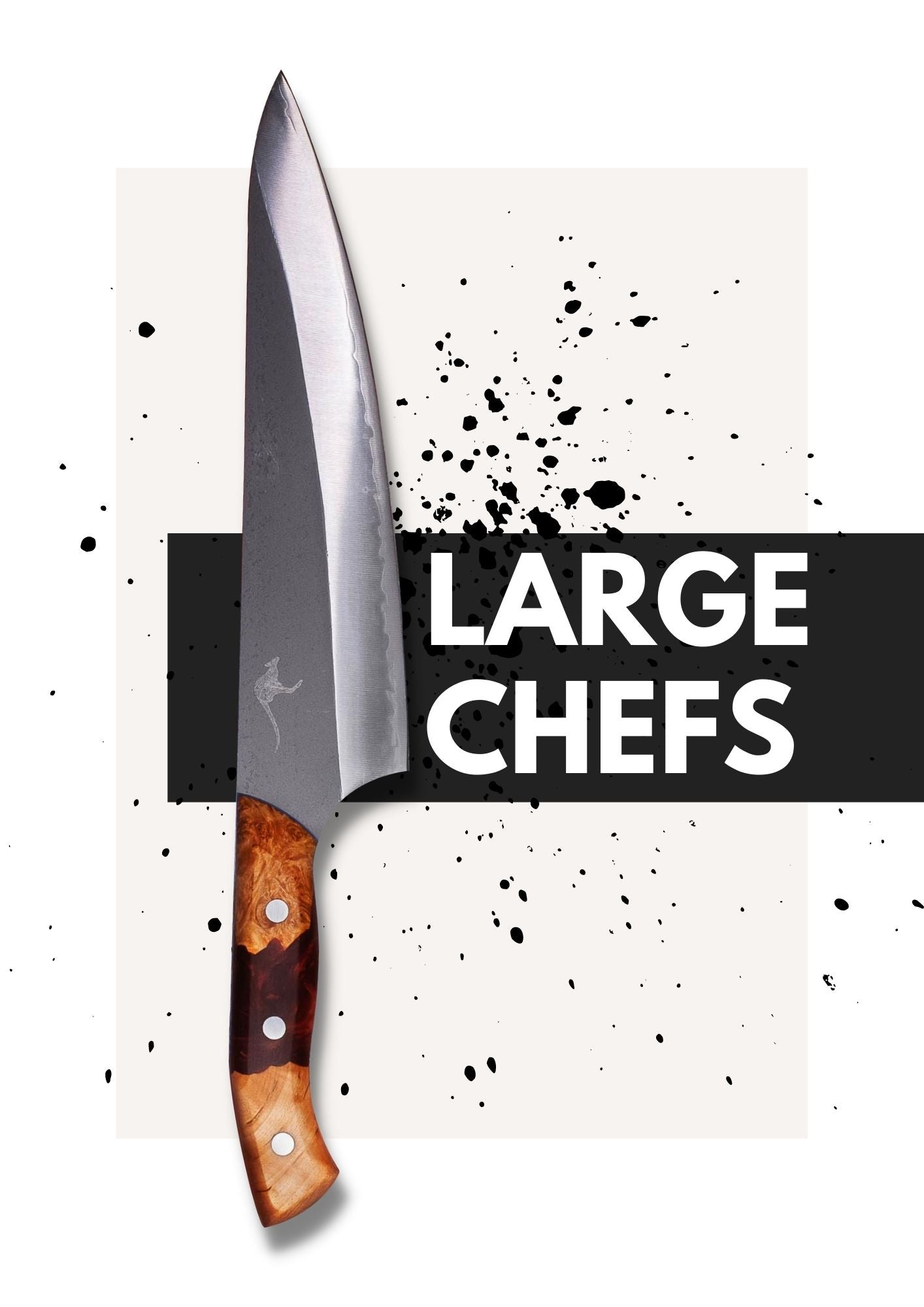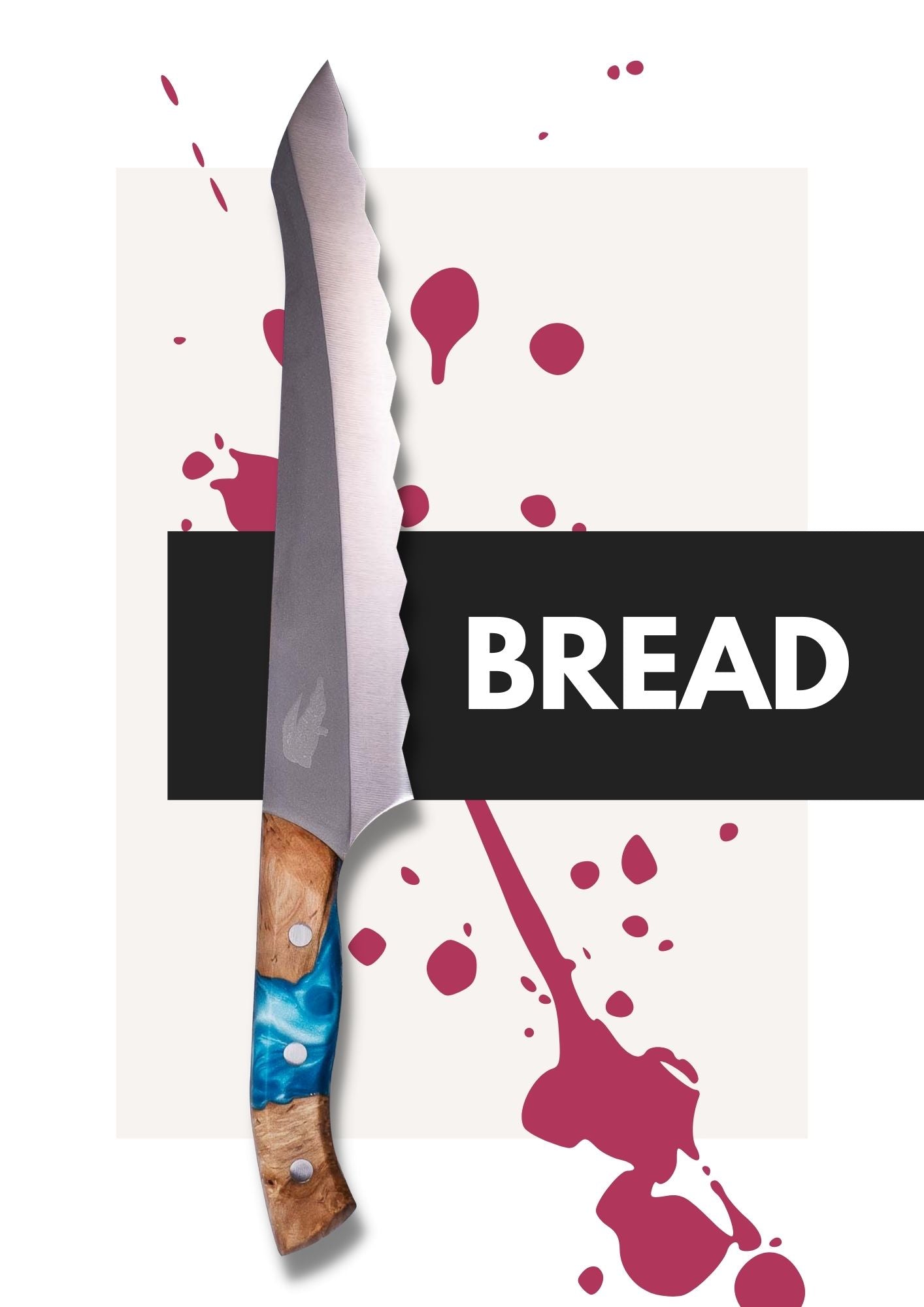A chef’s knife is the trusted companion to every professional cook. Its classic shape and design make it a mainstay in most chefs kits as it excels in almost all areas of the kitchen. Whether you need to chop, slice or roll-cut, the chef’s knife is a powerful allrounder. The length, weight and curvature of the blade make it suitable for all tasks. If you are looking to buy your first knife, don’t look past this classic of the kitchen.
Origin
France, the modern era of manufacturing knives was launched (1731)
Blade length & width
Traditional chef knives usually have a blade length of 21 centimetres and a width of 2.8 centimetres. While blade lengths differ depending on what type of chef knife it is, the length ranges between 15 to 36 centimetres.
Purpose
While the chef’s knife has had numerous variations in different countries over the years, its modern interpretation originated in France. Also known as a cook’s knife (the literal English meaning of “chef” is a skilled cook), it has always been a popular choice for chefs and home cooks since it’s a general utility knife you can use to slice large meat or make fine cuts.
Considering you can use the chef’s knife for almost everything, its original purpose though was to make slicing motions wherein you pull the knife to you to cut through the ingredients. Moreover, when you make the slicing motion rather than bluntly chopping your ingredients, you can better control your knife. This means it’s possible to use the chef’s knife to make blunt slices of ingredients at the same time as showing a certain finesse in your slicing.
Its curved tip also allows you to roll-cut. Using the tip to leverage the knife over ingredients, you can make a fluid movement back and forth on your chopping board, making small slices as you go.
Tips when using a Chef’s Knife
When you use a chef’s knife, it’s not as easy as picking it up and cutting through your ingredients since there’s a certain finesse in handling it. To get a better handle of how to use a chef’s knife, whether it’s the traditional French, German, or Japanese one, see below.
A chef’s knife size
Different chef’s knives can have varying sizes between 15 to 36 centimetres so you need to choose wisely which one will fit your hand perfectly. After all, you can’t choose a chef’s knife at random solely for its shape, durability and the like, since gauging the length of a blade and if you can handle it, will be important to you when you use it. Otherwise, if you choose the wrong blade length, you might not utilize the knife properly for all your kitchen needs. In addition, if you select a chef’s knife too long for common tasks in your kitchen, you can make it more difficult to handle.
How to handle a chef’s knife
When you handle a chef’s knife, it’s not as easy as simply holding it in your hand and slicing all the ingredients you need to. After all, a knife is a sharp tool so you need to be careful when using it which is why you need to know the right tips to use a chef’s knife safely. Here are some tips you need to follow:
- While holding the knife, check your hand that holds the knife and position your thumb and finger a little past the handle to get a better grip of the knife. This will allow you to control the chef’s knife better. This is what is called the “pinch-grip”.
- Make sure your knife is always in contact with your cutting board so your ingredients are sliced through properly.
- If you want to make fine slices of your ingredients, make sure the tip of your blade has constant contact with the cutting board while you move your handle up and down in successive motions. This will allow you to make precise cuts as well as have a better grip of your knife.
- Make sure to not use your knife’s blade to scrape things off a surface since that will make your blade dull quickly. If you have to use your knife to scrape, you can use the spine of the knife instead.
How to make your chef’s knife last longer
When you buy a knife, you make an investment in making delicious meals. This means, you have to properly take care of it so your knife will last for years and remain as sharp as the first day you bought it. Here are a couple of tips to take proper care of your knife:
- When you’re not using your knife, make sure to keep it safe in a storage or knife block where each knife is separate from each other. This is important because if you keep them randomly in a cabinet or drawer where the knives are close and bumping each other, it can quickly make the blade dull or damage it.
- When you use the knife, make sure you have a good cutting board like a polyethylene one since it’s easier to use compared to harder cutting boards like a glass one.
- When you buy a knife, make sure to keep it sharp following safe guidelines online or by the manufacturer since it’s safer to use a sharp knife rather than one with a dull blade.
- When you wash your knife, make sure to hand wash and not use a dishwasher since the blade will be damaged if you place it there.
- Make sure you dry your knife quickly when you clean it so the chances of it rusting will be avoided.
- When you use your chef’s knife, make sure to only use the tip of the blade for tasks that need precision and for delicate ingredients.
- Use the heel of the knife on thicker ingredients like starchy vegetables where you can apply more pressure and have better control.



